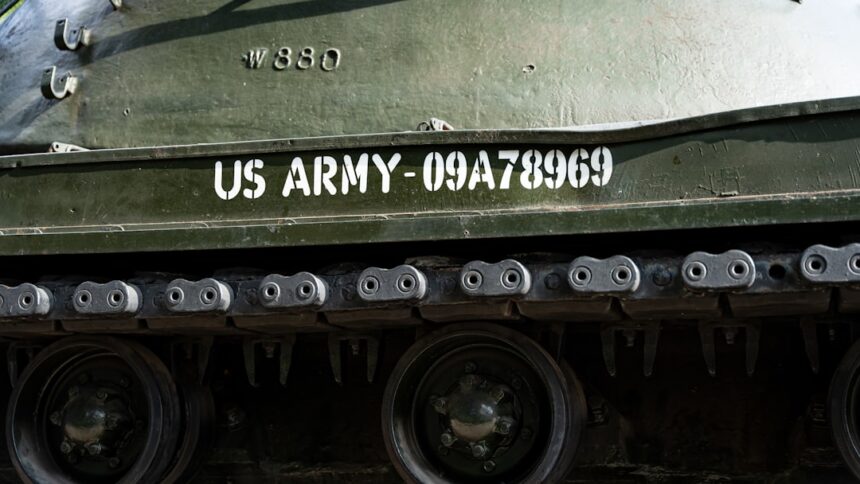Military budgeting is a critical aspect of national defense strategy, encompassing the allocation of financial resources to ensure a country’s security and military readiness. It involves a complex interplay of political, economic, and strategic considerations, as governments must balance the need for robust defense capabilities with fiscal responsibility. The military budget not only reflects a nation’s priorities but also serves as a barometer for its geopolitical stance and commitment to international alliances.
As global threats evolve, so too must the frameworks and methodologies that govern military budgeting. In recent years, the landscape of military budgeting has become increasingly intricate. With the rise of non-traditional threats such as cyber warfare and terrorism, alongside conventional military challenges, nations are compelled to reassess their financial commitments to defense.
This dynamic environment necessitates a comprehensive understanding of both historical precedents and contemporary demands, as military budgets must be agile enough to adapt to unforeseen circumstances while remaining aligned with long-term strategic goals.
Key Takeaways
- Military budgeting is a crucial aspect of national defense and security planning.
- Historical perspectives on military budgeting provide valuable insights into current practices and challenges.
- Modern warfare has significantly impacted military budgeting, requiring strategic adaptation and resource allocation.
- Balancing traditional and emerging threats is essential for effective military budgeting and preparedness.
- Technology, intelligence, cybersecurity, and international cooperation play vital roles in modern military budgeting.
Historical Perspective on Military Budgeting
The history of military budgeting is rich and varied, reflecting the changing nature of warfare and national security needs over centuries. In ancient times, military expenditures were often dictated by the immediate needs of warfare, with resources allocated based on the demands of specific campaigns. As states evolved into more complex entities, so too did their approaches to budgeting for military endeavors.
The establishment of standing armies in the early modern period marked a significant shift, as nations began to recognize the importance of sustained military readiness and the financial implications that accompanied it. The 20th century brought about unprecedented changes in military budgeting, particularly during the two World Wars. Governments were forced to mobilize vast resources in a short period, leading to the development of more structured budgeting processes.
The post-war era saw the emergence of defense spending as a key component of national policy, with countries like the United States adopting a more systematic approach to military expenditures. This historical context laid the groundwork for contemporary military budgeting practices, which continue to evolve in response to new challenges and technological advancements.
The Impact of Modern Warfare on Military Budgeting

Modern warfare has fundamentally altered the landscape of military budgeting, introducing complexities that were previously unimaginable. The advent of asymmetric warfare, where state and non-state actors engage in conflict using unconventional tactics, has necessitated a reevaluation of how resources are allocated. Traditional metrics for assessing military effectiveness, such as troop numbers and hardware capabilities, are no longer sufficient indicators of a nation’s defense posture.
Instead, military budgets must now account for a broader range of factors, including intelligence capabilities, cyber defenses, and counter-terrorism initiatives. Moreover, the rise of hybrid warfare—where conventional and unconventional tactics are employed simultaneously—has further complicated budgeting processes. Nations must now invest in diverse capabilities that can address multiple threats concurrently.
This shift has led to increased pressure on defense budgets, as governments strive to maintain readiness across various domains while also investing in innovative technologies that can provide a competitive edge in future conflicts.
Strategic Allocation of Resources for Modern Warfare
| Resource | Allocation |
|---|---|
| Personnel | Strategic deployment of troops based on expertise and experience |
| Technology | Investment in advanced weaponry and surveillance systems |
| Funding | Allocating budget for research, development, and training |
| Logistics | Efficient supply chain management for timely delivery of resources |
| Intelligence | Strategic gathering and analysis of information for decision-making |
The strategic allocation of resources in military budgeting is paramount in ensuring that nations can effectively respond to contemporary threats. This involves not only determining how much funding is necessary but also identifying where those funds will be most impactful. Decision-makers must prioritize investments in areas that enhance operational effectiveness, such as advanced weaponry, training programs, and logistical support systems.
The challenge lies in balancing immediate needs with long-term strategic objectives, ensuring that resources are not only allocated efficiently but also aligned with overarching defense goals. In this context, scenario-based planning has emerged as a vital tool for military budgeting. By simulating various conflict scenarios, defense planners can better understand potential resource requirements and allocate funds accordingly.
This proactive approach allows for greater flexibility in responding to emerging threats while also fostering a culture of innovation within military organizations. As nations grapple with the complexities of modern warfare, strategic resource allocation will play a crucial role in shaping their defense capabilities and overall security posture.
Balancing Traditional and Emerging Threats in Military Budgeting
One of the most significant challenges facing military budgeting today is the need to balance traditional threats with emerging ones. While conventional state-based threats remain relevant, non-traditional challenges such as cyber attacks and terrorism have gained prominence in recent years. This duality requires defense planners to adopt a holistic approach to budgeting that encompasses both types of threats.
Allocating resources effectively between these competing priorities is essential for maintaining national security. To achieve this balance, military budgets must be designed with flexibility in mind. This may involve creating contingency funds that can be rapidly deployed in response to unforeseen threats or investing in dual-use technologies that can serve multiple purposes across different domains.
Additionally, collaboration between various branches of the military and intelligence agencies can enhance resource allocation efficiency by ensuring that efforts are not duplicated and that all aspects of national security are addressed comprehensively.
The Role of Technology in Military Budgeting

Technology plays an increasingly pivotal role in shaping military budgets, influencing both expenditure patterns and strategic priorities. As advancements in technology continue to accelerate, defense planners must consider how these innovations can enhance operational capabilities while also being mindful of their costs. Investments in cutting-edge technologies such as artificial intelligence, unmanned systems, and advanced cyber capabilities have become essential components of modern military budgets.
However, integrating new technologies into existing frameworks presents its own set of challenges. Defense organizations must ensure that they have the necessary infrastructure and training programs in place to support these innovations effectively.
As technology continues to evolve at a rapid pace, military budgeting will need to remain agile and responsive to capitalize on emerging opportunities while managing associated risks.
The Importance of Intelligence and Surveillance in Military Budgeting
Intelligence and surveillance capabilities are critical components of effective military operations and must be prioritized within defense budgets. Accurate intelligence gathering enables decision-makers to make informed choices regarding resource allocation and operational planning. As threats become more complex and multifaceted, investing in advanced surveillance technologies becomes increasingly important for maintaining situational awareness on the battlefield.
Moreover, intelligence-driven budgeting allows for more targeted resource allocation by identifying specific vulnerabilities and potential areas for investment. By leveraging data analytics and other technological advancements, defense planners can enhance their understanding of emerging threats and allocate funds accordingly. This proactive approach not only improves operational effectiveness but also ensures that military budgets are aligned with current security challenges.
Addressing Cybersecurity in Military Budgeting
In an era where cyber threats pose significant risks to national security, addressing cybersecurity within military budgeting has become imperative. Cyber warfare capabilities are now considered essential components of modern defense strategies, necessitating dedicated funding for both offensive and defensive measures. As adversaries increasingly exploit vulnerabilities in digital infrastructure, governments must prioritize investments in cybersecurity initiatives to safeguard critical systems and information.
This focus on cybersecurity requires a comprehensive approach that encompasses not only technological solutions but also personnel training and public-private partnerships. Defense budgets must allocate resources for developing skilled cyber professionals who can effectively counter emerging threats while also fostering collaboration with private sector entities that possess specialized expertise. By integrating cybersecurity considerations into overall military budgeting processes, nations can enhance their resilience against cyber attacks and ensure the integrity of their defense operations.
Ensuring Readiness and Preparedness in Military Budgeting
Ensuring readiness and preparedness is a fundamental objective of military budgeting, as it directly impacts a nation’s ability to respond effectively to crises. This involves not only maintaining adequate troop levels and equipment but also investing in training programs that enhance operational capabilities. A well-prepared military is better equipped to adapt to changing circumstances and execute missions successfully.
To achieve this level of readiness, defense budgets must account for ongoing training exercises, maintenance programs for equipment, and logistical support systems that ensure troops are adequately supplied and supported during operations. Additionally, fostering a culture of continuous improvement within military organizations can enhance overall preparedness by encouraging innovation and adaptability among personnel. By prioritizing readiness within military budgets, nations can bolster their defense capabilities and ensure they are prepared for any eventuality.
International Cooperation and Alliances in Military Budgeting
International cooperation and alliances play a crucial role in shaping military budgets around the world.
As global threats become increasingly interconnected, countries must recognize the value of working together to address common challenges through joint exercises and shared funding mechanisms.
Military budgets often reflect these collaborative efforts by allocating resources for joint training programs or multinational operations. Additionally, alliances such as NATO provide frameworks for member states to coordinate their defense spending effectively while ensuring that collective security commitments are met. By fostering international cooperation within military budgeting processes, nations can enhance their overall security posture while also promoting stability on a global scale.
Adapting Military Budgeting for the Future
As the landscape of global security continues to evolve rapidly, adapting military budgeting practices will be essential for nations seeking to maintain their defense capabilities effectively. The interplay between traditional threats and emerging challenges necessitates a flexible approach that prioritizes innovation while ensuring fiscal responsibility. By embracing new technologies, enhancing intelligence capabilities, addressing cybersecurity concerns, and fostering international cooperation, countries can position themselves to respond effectively to future conflicts.
Ultimately, successful military budgeting will require a commitment to continuous assessment and adaptation as new threats emerge on the horizon. By remaining vigilant and proactive in their budgeting processes, nations can ensure they are prepared for whatever challenges lie ahead while safeguarding their national interests in an increasingly complex world.
In exploring the future of military budgeting, it’s essential to consider the broader context of defense strategies and fiscal policies. An insightful article that complements this discussion is available on In The War Room’s website. This piece delves into the intricacies of defense spending and strategic allocation of resources, providing a comprehensive overview of how military budgets are shaped by both current needs and future projections. For a deeper understanding, you can read the related article by visiting In The War Room. This resource offers valuable perspectives on the evolving landscape of military finance and its implications for global security.
FAQs
What is military budgeting?
Military budgeting refers to the process of allocating funds for the defense and security needs of a country. It involves determining the amount of money that will be allocated to the military for personnel, equipment, operations, and other related expenses.
Why is military budgeting important?
Military budgeting is important because it ensures that a country’s armed forces have the necessary resources to maintain national security, protect the country’s interests, and respond to potential threats. It also helps in planning and prioritizing defense spending to meet the evolving security challenges.
What factors influence military budgeting?
Several factors influence military budgeting, including the country’s national security strategy, geopolitical environment, threat assessments, technological advancements, and economic considerations. Additionally, the size and capabilities of the military, as well as ongoing military operations, also impact budgeting decisions.
How is military budgeting likely to change in the future?
The future of military budgeting is likely to be influenced by advancements in technology, changes in global security dynamics, and evolving threats such as cyber warfare and terrorism. Additionally, economic factors and budget constraints may also shape future military budgeting decisions. Governments may also prioritize investments in areas such as cybersecurity, space defense, and unmanned systems.
What are some challenges in military budgeting?
Challenges in military budgeting include balancing the need for modernization with maintaining current capabilities, addressing rising personnel and healthcare costs, and ensuring transparency and accountability in defense spending. Additionally, political considerations and competing budget priorities can also pose challenges in military budgeting.




